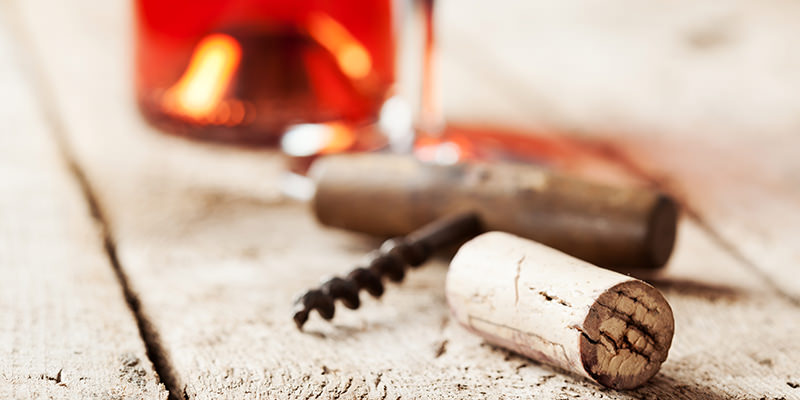It happens like this almost every time.
I’ll have a friend over and offer a glass of Rosé. The friend glances skeptically at the offering. “No thanks, I prefer red.”
Sometimes I’ll get desperate–“But it’s not sweet,” I’ll counter. “You know, ROSEAY, not ZIN.”
And yet still: “No thanks.”
Rosé began its rise in popularity about ten years ago. But it’s been slower to catch on here in South Carolina, where I’ve lived for the past few years, and the stigma of it being super sweet persists. It varies from label to label, but unlike a sweet blush wine, it can be as dry as any popular red or white.
Having grown up just outside DC, I admittedly take pride in being so much more aware of this incredibly delicious wine that sophisticatedly skirts the line between the two. Crisp and lighter than a red, but soft and warmer than a white, I absolutely adore Rosé. I like it quite cold and think it’s best on a hot summer night. It’s romantic, it’s pretty. When sipping a glass of it, you can picture yourself sprawled on a beach blanket with a beat up wicker basket next to your tanned arm, the detritus of a summer picnic littered around your bright red toenails.
Best of all, it’s dry.
I discovered Rosé a few years ago, soon after I had my first baby and was dipping my toe back into booze. We had a Costco nearby where you could get good wine for ridiculously cheap prices, and I loved turning on music, chopping dinner vegetables and dancing with my baby around the kitchen, all the while sipping wine and feeling very emotional. Having a new baby is much like those drunken phone calls in college: “No, you don’t get it, I really, REALLY love you.”
But this drippy love, the one that accompanies a baby and fine wine instead of cheap beer, comes without the price tag of crashing shame the next morning. Bonus, right?
Rosé feels the same way that first long necked beer with your parents feels after you’ve turned 21. Cool, different, a little club only we adults belong to. It’s a wine that has variety, and can be made in several ways. One method is to allow the grape skins to remain in contact with the grape juice for only a short time. Afterwards, the skins are discarded, and what’s left is a soft, petal pink wine.
Another is to simply mix a red and a white to create pink. It’s a method that’s been touted by some and discouraged by others, including winemakers and drinkers alike. Either way, it’s not something you’d want to admit in a room full of hipsters.
Years ago I read an article about how the unsophisticate would over-chill her white wine and under-chill her red. A red should theoretically be a bit cooler than room temperature say 65-ish degrees, whereas a white shouldn’t technically be as cool as your fridge more like in the low 50s.
I was rankled by this bit of information because it not only called me out for not knowing better, but forced me into an imaginary argument with the ‘expert’ who wrote the article. “But I like cold white wine. I’m talking cold, cold. Shouldn’t it be about what you like?” I would say to the expert. “And red? The warmth is so much tastier. Don’t you know anything?”
My grandmother was a woman who knew and loved good wine. She grew up in a world full of dinner parties, art and prep schools, cut glass jam jars, that sort of thing. One of my earlier memories is of following my grandfather down the rickety stairs to the wine cellar in their two-hundred year-old townhouse. Some of the bottles were worth more than my entire summer of babysitting money. My grandparents were members of an exclusive winetasting club where people actually wore medallions–without irony.
Like what you like. Don’t what you don’t.
So when, in my early twenties, I asked her how I should teach myself about wine, I was surprised by her down-to-earth, no frills answer. She advised me to get a notebook, begin drinking wines and then simply paste the labels I liked into the notebook. I could add notes if I wanted, but if I only added the labels I liked, even notes weren’t necessary.
That’s it. When I prodded her for more specific advice, she answered: Like what you like. Don’t what you don’t.
So how did I end up here: arguing with an imaginary Internet friend about wine temperature (her obvious snobbery), to being the snob, with my insufferable Rosé test?
In South Carolina the weight of tradition is heavy. This is a state entrenched in ancient customs and that hasn’t yet boarded the hemp-grown children’s clothes train. Where traditions of your parents and grandparents are not only respected, but revered. A chilled mint julep or a cold beer, maybe, but Rosé? Perhaps not.
Or maybe she simply doesn’t like Rosé. I had one girlfriend call me out over my test – I do know how dry Rosé is, I just prefer reds. Ouch. Perhaps we are not all trying to be a Real Housewife in the Big City. We prefer our tried and true spirits. Is rejecting the current wine trend a crime?
The truth is, being an expert consists of nothing more than knowing your own voice. I love Rosé, but I also like my reds a bit too warm. I’ll even throw an ice cube in a glass of white (shh, don’t tell).
Still, if you come to my house, just accept the Rosé.

